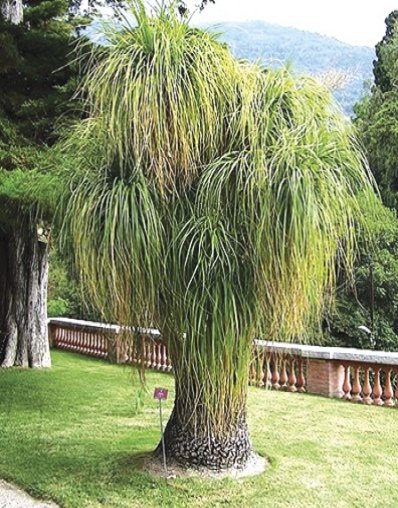Phuket Gardening: Adding yet more green to your living spaces

PHUKET: For years – five to be precise – I have kept about fifteen plants, potted in ceramic containers, on the patio outside my front door. The original idea came from my Thai partner who wanted “lucky plants” to grace and guard the entrance to the house. So we slowly acquired some of these talismans, mostly with unknown botanical names. They thrived in the shade provided by the house, kissed only by the sun for an hour or two each day.
With the exception of one “lucky” mistletoe fig (ficus deltoidea), which initially grew with great gusto, and then mysteriously gave up the ghost, they are still there… or almost. A few months ago, I brought several indoors to see if they could make it as house plants. I had already tried the usual culprits: soft-stemmed dieffenbachias, aglaonemas, philodendrons, calatheas and spathiphylums.
Most started well, but began to show signs of stress after a few weeks in the sin-bin, and had to be released outdoors. Anyway it was time for something different. Two, now sentenced to life on the inside, have animal tags related to their appearance: a sansevieria stick-ye or elephant trunk, and a nolina recurvata or ponytail palm. More about these anon.
But the most successful of all these transfers was another odd plant, known in Thailand as waan moracot. Its common name is Zanzibar gem, its actual botanical name – zamioculcus zamifolia – a real mouthful. No wonder it gets shortened to ZZ.
It is, moreover, the only member of its genus – a rare characteristic in the plant world. Not a rare presence in Thailand though, where specimens are often seen on front porches and patios. In fact, mine, originally just a couple of cuttings, came from an unpretentious Thai eatery in Karon.
With a name like zamioculcus, you would expect it to be exotic. And it doesn’t disappoint. In fact it has the look of a lush, heavyweight fern, with a clutch of thick, sappy stems up to an inch across, luxuriating from its base. These stems in turn have grown from a tuberous rhizome beneath the soil, a rhizome that stores water and starch, and thus enables the plant to survive in its native East Africa, where there are pronounced wet and dry seasons.
The succulent stems, each carrying ten or more pairs of leathery, glossy, dark green leaflets on either side, taper towards the top. The plant even has bizarre flowers, in the form of a dense, arum-like spadix. ZZ looks primitive, almost as though it existed when dinosaurs roamed the planet.
The good news is that zamioculcus is almost indestructible: it will tolerate neglect, imprisonment in a pot and the various challenges of life indoors. Best in dry soil with some sand in the mix, it will nonetheless drop its leaves if it is left without water for too long. Apparently, it is deciduous in its native Africa, especially if the wet season is slow in arriving. But my lounge lizard has shown no interest in sloughing off its clothes.
If your ZZ does show signs of shedding its leaflets, it probably needs a good drink.
Because it is considered a “lucky” presence, the Zanzibar gem is relatively easy to find in superstitious Phuket. The Super Cheap, for example, usually has a few on offer.
The only drawback is that ZZ is slow-growing and, because of this, it is relatively expensive to buy in this area.
Best propagated from rhizomes (large specimens can be divided up), it is one of the very few plants that can be grown from single leaves, half buried in sandy potting mix.
That’s probably why it is considered to be a lucky plant. Big returns from small beginnings. Something from nothing. Zzzz…
Tip of the week – Spicing things up
I am currently growing chillies from seed. I used to have plants, which neighbors came and culled. Time to grow more. After all, the chilli is ubiquitous in Thailand. On any dining table they will be there – mixed with fish sauce, ground down to make a red powder, or the fiery concoction known as naam prik. An ingredient in green curries too.
Though native to the Americas, there are many varieties which grow here, from the large and faintly sweet bell pepper – in glossy shades of red, orange, yellow and green, to the familiar, long thin prik chee faa, and the smaller but even hotter prik kee nuu.
Available as seed in packets, they will germinate readily in moist, loam-filled pots. They can be transplanted when a few inches tall, preferably to an area of filtered sunlight. Later they will fruit more effectively given a sunny situation.
Try mixing chillies with flowering plants. They go well together and make attractive bushes.
If you have a question or a garden that you would like featured, you can email the author here.
Keep checking our online Phuket Lifestyle pages or join our Facebook fan page for regular gardening features and tips.
— Patrick Campbell
Latest Thailand News
Follow The Thaiger on Google News:


























